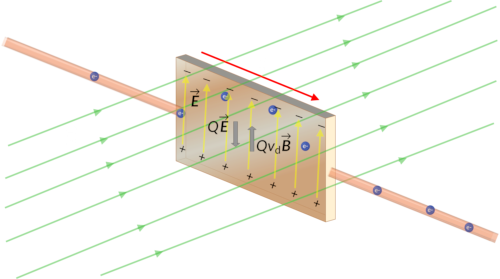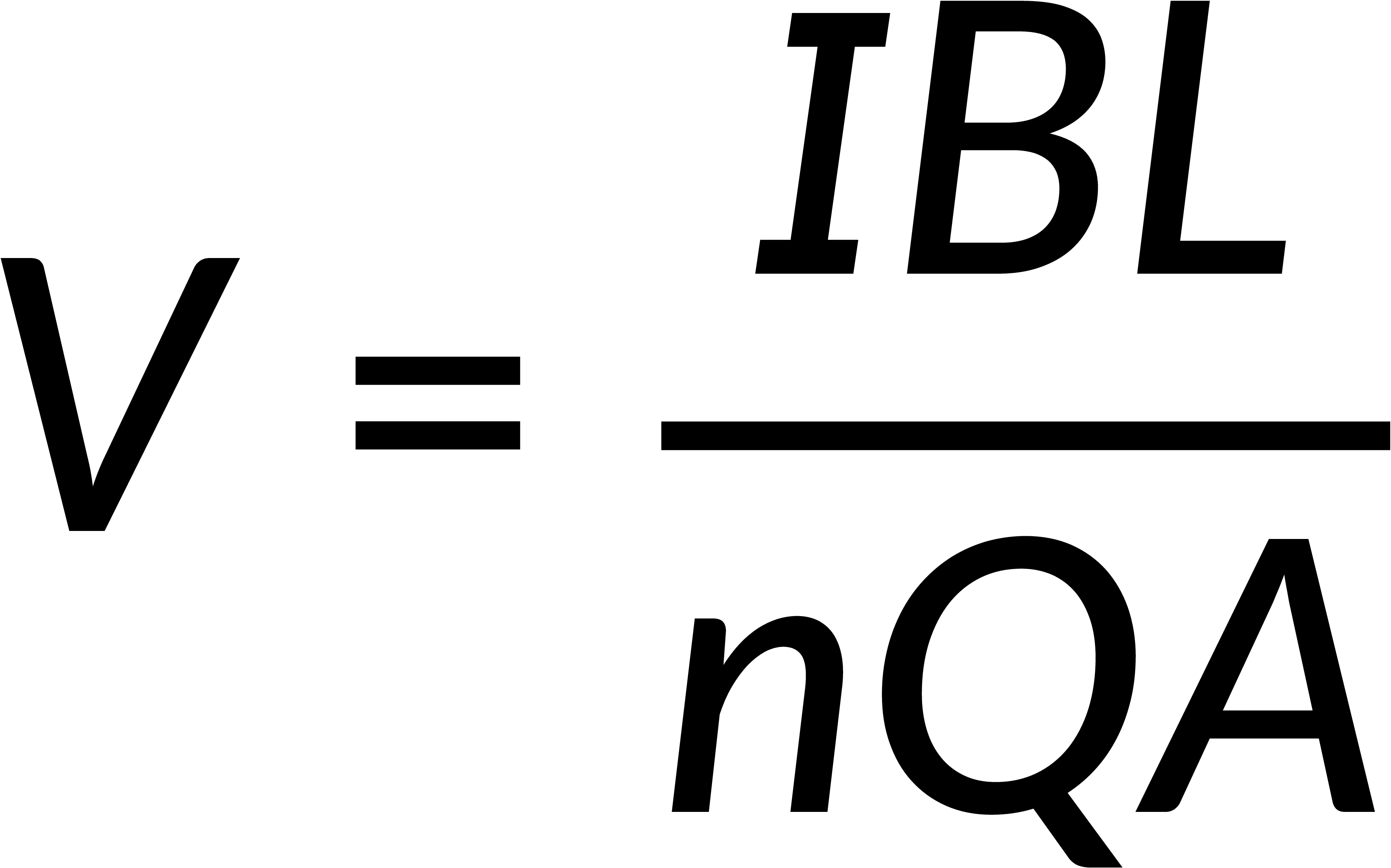Edwin H. Hall, in the year 1879, devised an experiment that could be used to identify the polarity of the predominant charge carriers in a conducting material. From a historical perspective, this experiment was the first to demonstrate that the charge carriers in most metals are negative.

Consider a metal slab of width L in a constant magnetic field. The electrons move from the right to the left, so the magnetic force they experience pushes the electrons to the top edge of the slab. This leaves an excess negative charge at the top edge of the slab and an excess positive charge at the bottom edge of the slab, resulting in an electric field directed from the bottom to the top. The charge concentration at both edges builds until an equilibrium condition is established. At equilibrium, the electric force on the electrons in one direction is balanced by the magnetic force in the opposite direction. This scenario in which the electric and magnetic fields are perpendicular to one another is called a crossed-field situation.
The current in the slab I can be written in terms of the drift velocity, vd, and the cross-sectional area of the slab, A. The potential difference between the edges of the strip, which is otherwise called the Hall voltage, is given by,

The polarity of the Hall voltage shows whether the charge carriers are positive or negative. Another important application of this effect is for materials with a known density of charge carriers. The measured Hall voltage can give the value of an unknown magnetic field. In research laboratories in which the fields of the electromagnets used for precise measurements have to be highly steady, a "Hall probe" is commonly used as part of the electronic circuit to regulate the field.
Aus Kapitel 28:

Now Playing
28.11 : The Hall Effect
Magnetic Forces and Fields
2.0K Ansichten

28.1 : Magnetismus
Magnetic Forces and Fields
6.0K Ansichten

28.2 : Magnetfelder
Magnetic Forces and Fields
5.7K Ansichten

28.3 : Magnetische Feldlinien
Magnetic Forces and Fields
3.8K Ansichten

28.4 : Magnetischer Fluss
Magnetic Forces and Fields
3.3K Ansichten

28.5 : Bewegung eines geladenen Teilchens in einem Magnetfeld
Magnetic Forces and Fields
4.1K Ansichten

28.6 : Magnetische Kraft
Magnetic Forces and Fields
745 Ansichten

28.7 : Magnetische Kraft auf einen stromdurchflossenen Leiter
Magnetic Forces and Fields
3.9K Ansichten

28.8 : Magnetkraft auf stromdurchflossene Drähte: Beispiel
Magnetic Forces and Fields
1.3K Ansichten

28.9 : Kraft auf eine Stromschleife in einem Magnetfeld
Magnetic Forces and Fields
3.0K Ansichten

28.10 : Drehmoment an einer Stromschleife in einem Magnetfeld
Magnetic Forces and Fields
3.6K Ansichten

28.12 : Thomsons e/m Experiment
Magnetic Forces and Fields
2.8K Ansichten
Copyright © 2025 MyJoVE Corporation. Alle Rechte vorbehalten